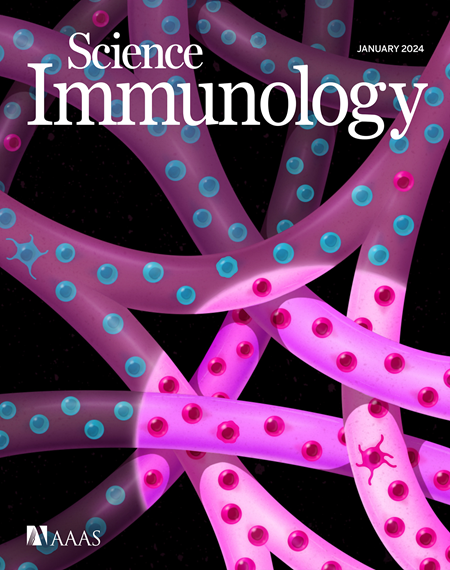Primate retroelement exonization and sexually dimorphic IL13RA1 transcription tune type 2 immune responses
IF 16.3
1区 医学
Q1 IMMUNOLOGY
引用次数: 0
Abstract
Type 2 immunity is orchestrated by IL-4 and IL-13 signaling, initiated by binding to receptors that are specific to each cytokine or to the shared heterodimeric receptor comprising the IL-4Rα and IL-13Rα1 subunits. Here, we report that sexually dimorphic IL13RA1 transcription is regulated by estrogen and characterize an IL-13Rα1 isoform (referred to here as IL-13Rα1–LOR1a) created through facultative splicing to an alternative terminal exon composed of primate-specific retrotransposable elements (RTEs). At the mRNA level, RTE exonization replaces regulatory sequences in the canonical 3′ untranslated region (3′UTR) implicated in IL13RA1 mRNA stability. Moreover, alternative splicing removes critical domains in the cytoplasmic tail, rendering the IL-13Rα1–LOR1a isoform partially signaling defective at the protein level. When coexpressed, the IL-13Rα1–LOR1a isoform antagonizes the function of the canonical receptor, reducing cellular responsiveness to IL-4 and IL-13. Thus, the balance of the two IL13RA1 isoforms appears to fine-tune type 2 cytokine signaling and downstream immune responses.
灵长类逆转录因子外显子和两性二态IL13RA1转录调节2型免疫应答
2型免疫由IL-4和IL-13信号传导调控,通过与每种细胞因子特异性受体或由IL-4Rα和IL-13Rα1亚基组成的共享异二聚体受体结合而启动。在这里,我们报告了两性二态IL13RA1转录受雌激素调节,并表征了IL-13Rα1同种异构体(这里称为IL-13Rα1 - lor1a)通过兼性剪接到由灵长类特异性反转录转座元件(rte)组成的另一个末端外显子上产生。在mRNA水平上,RTE外显子化取代了与IL13RA1 mRNA稳定性相关的规范3 ‘非翻译区(3 ’ utr)中的调控序列。此外,选择性剪接去除细胞质尾部的关键结构域,使IL-13Rα1-LOR1a亚型在蛋白质水平上部分信号传导缺陷。当共表达时,IL-13Rα1-LOR1a亚型拮抗典型受体的功能,降低细胞对IL-4和IL-13的反应性。因此,两种IL13RA1亚型的平衡似乎可以微调2型细胞因子信号传导和下游免疫反应。
本文章由计算机程序翻译,如有差异,请以英文原文为准。
求助全文
约1分钟内获得全文
求助全文
来源期刊

Science Immunology
Immunology and Microbiology-Immunology
CiteScore
32.90
自引率
2.00%
发文量
183
期刊介绍:
Science Immunology is a peer-reviewed journal that publishes original research articles in the field of immunology. The journal encourages the submission of research findings from all areas of immunology, including studies on innate and adaptive immunity, immune cell development and differentiation, immunogenomics, systems immunology, structural immunology, antigen presentation, immunometabolism, and mucosal immunology. Additionally, the journal covers research on immune contributions to health and disease, such as host defense, inflammation, cancer immunology, autoimmunity, allergy, transplantation, and immunodeficiency. Science Immunology maintains the same high-quality standard as other journals in the Science family and aims to facilitate understanding of the immune system by showcasing innovative advances in immunology research from all organisms and model systems, including humans.
 求助内容:
求助内容: 应助结果提醒方式:
应助结果提醒方式:


